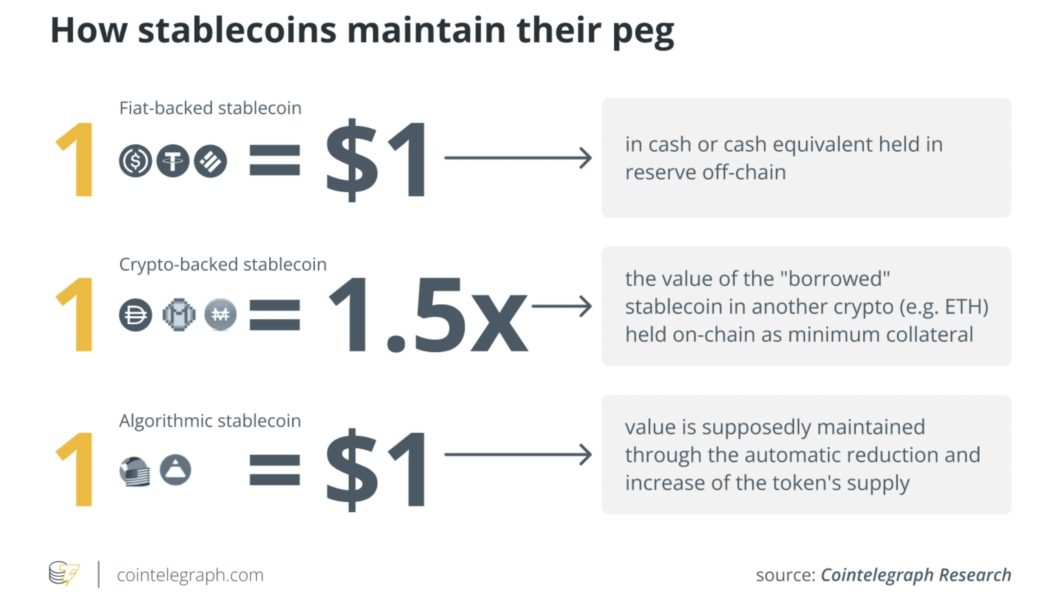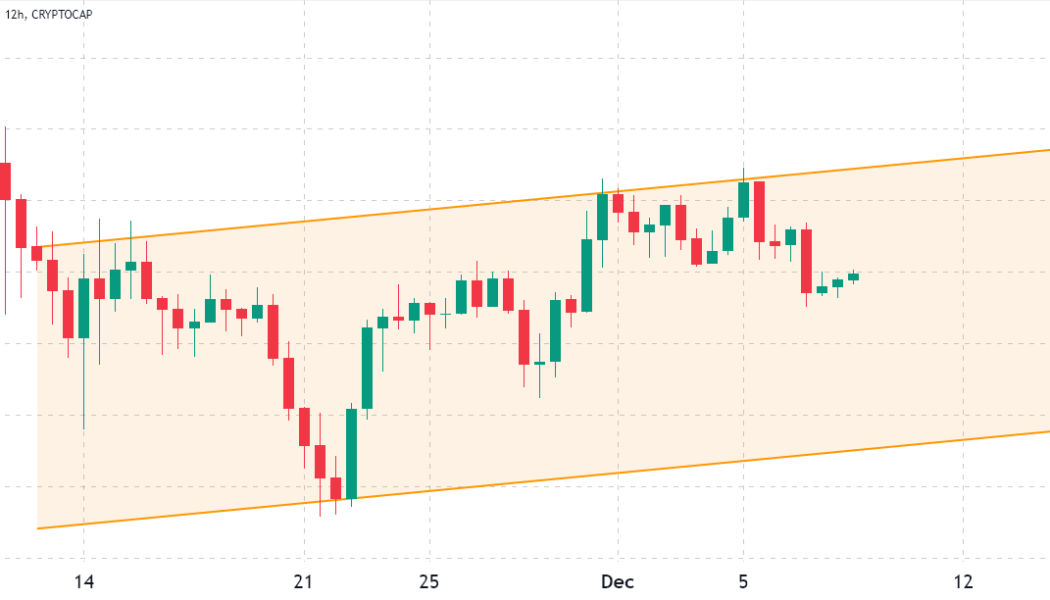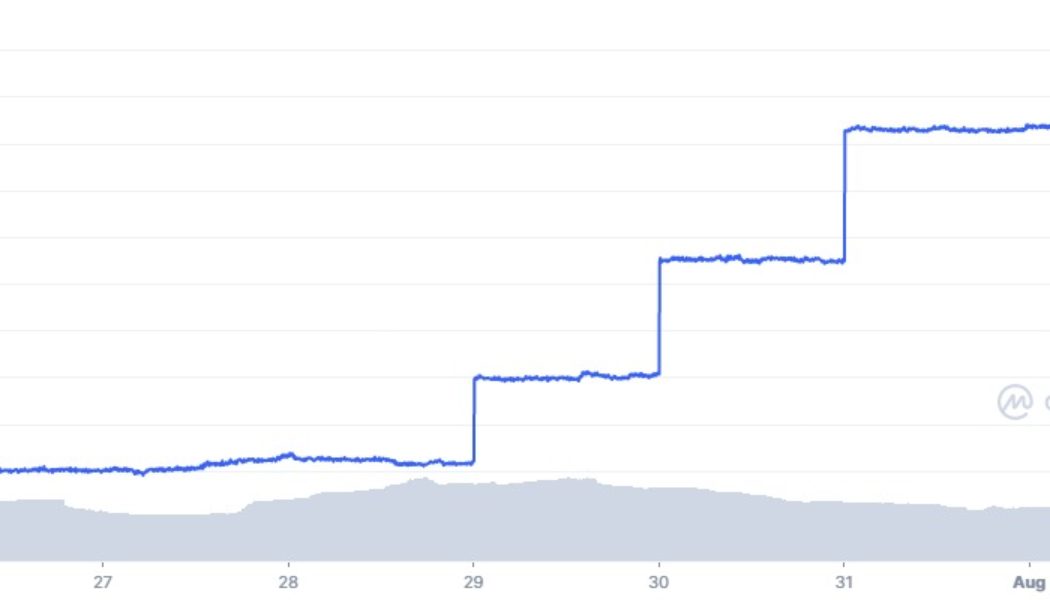stablecoins
Algorithmic stabilization is the key to effective crypto-finance
After the collapse of Terraform Labs’ cryptocurrency, Terra (LUNA), and its stablecoin, Terra (UST), the notion of “algorithmic stabilization” has fallen to a low point in popularity, both in the cryptocurrency world and among mainstream observers. This emotional response, however, is strongly at odds with reality. In fact, algorithmic stabilization of digital assets is a highly valuable and important class of mechanism whose appropriate deployment will be critical if the crypto sphere is to meet its long-term goal of improving the mainstream financial system. Blockchains, and other similar data structures for secure decentralized computing networks, are not only about money. Due to the historical roots of blockchain tech in Bitcoin (BTC), however, the theme of blockchain-based digita...
Brazil could cement its status as an economic leader thanks to 2024 CBDC move
As of 2022, more than 30 million Brazillian citizens have no bank accounts, and no credit or debit cards. What’s wrong here? For roughly a decade, Brazil has been passing legislation aimed at changing the situation. However, the results have fallen short of expectations. To better understand the reason, let’s take a step back to look at a historical perspective. The Brazilian banking industry has always been extremely concentrated, historically due to the country’s macroeconomic volatility, the bank’s legacy technology and stringent oversight. At one point in time, the regulator needed some reliable “bulwarks” to build the local financial system and deal with scale. Concentration was an inevitable flipside of that strategy. However, in the past few years, the balance started to shift, with...
Crypto awakening: Researcher explains ETH exodus from exchanges
Blockchain analytics carried out by a Nansen researcher has highlighted outflows of Ether (ETH) and stablecoins from centralized exchanges in the wake of FTX’s collapse. Nansen research analyst Sandra Leow posted a thread on Twitter unpacking the current state of decentralized finance (DeFi), with a specific focus on the movement of ETH and stablecoins from exchanges. As it stands, the Ethereum 2.0 deposit contract contains over 15 million ETH, while some 4 million Wrapped Ether (wETH) is held in the wETH deposit contract. Web3 infrastructure development and investment firm Jump Trading holds over 2 million ETH tokens and is the third largest holder of ETH in the ecosystem. The current state of DeFi in @nansen_ai charts — sandra lmeow (@sandraaleow) November 22, 2022 Binance, Kraken, Bitfi...
HK and Singapore’s mega-rich are eyeing crypto investments: KPMG
Hong Kong and Singapore’s wealthy elite appear to be looking at digital assets with fervor, after a new report from KPMG suggesting over 90% of family offices and high-net-worth individuals (HNWI) are interested in investing in the digital assets space or have already done so. According to an Oct. 24 report from KPMG China and Aspen Digital titled “Investing in Digital Assets,” as much as 58% of family offices and HNWI of respondents in a recent survey are already investing in digital assets, and 34% “plan to do so.” The survey took the pulse from 30 family offices and HNWIs in Hong Kong and Singapore with most respondents managing assets between $10 million to $500 million. KPMG said the large crypto uptake among the ultra-wealthy has increased confidence in the sector, spurred...
IRS introduces broader ‘Digital Assets’ category ahead of 2022 tax year
American taxpayers will find a broader, more defined category encompassing cryptocurrencies and nonfungible tokens (NFTs) in their 2022 IRS tax forms. The draft bill released by the Internal Revenue Service features a well-defined Digital Assets section that outlines if and how taxpayers will account for the use of cryptocurrencies, stablecoins and NFTs. Page 16 of the draft defines Digital Assets as any digital representations of the value recorded on a ‘cryptographically secured distributed ledger or any similar technology.’ 2021’s tax form required taxpayers to indicate whether they had received, sold or exchanged in ‘virtual currency’ – with this term changing in the yet-to-issued 1040 tax form for 2022. Taxpayers are required to answer the Digital Assets s...
Tether says it would not freeze sanctioned Tornado Cash addresses unless instructed by law enforcement
On Wednesday, U.S. dollar stablecoin issuer Tether (USDT) said that it would not freeze smart contract addresses sanctioned by the U.S. Office of Foreign Assets (OFAC) Control’s Specially Designated Nationals and Blocked Persons (SDN) list for cryptocurrency trail-mixer Tornado Cash. In explaining the decision, Tether said: “So far, OFAC has not indicated that a stablecoin issuer is expected to freeze secondary market addresses that are published on OFAC’s SDN List or that are operated by persons and entities that have been sanctioned by OFAC. Further, no U.S. law enforcement agency or regulator has made such a request despite our near-daily contact with U.S. law enforcement whose requests always provide precise details.” Tether pointed out that unilaterally f...
United Texas Bank CEO wants to ‘limit the issuance of US dollar-backed stablecoins to banks’
Scott Beck, chief executive officer of United Texas Bank, called on members of the state’s blockchain working group to recommend policy for leaving stablecoins to banks rather than crypto firms. Speaking before the Texas Work Group on Blockchain Matters in Austin on Friday, Beck suggested limiting the issuance of U.S. dollar-backed stablecoins to licensed banks rather than issuers like Circle. The United Texas Bank CEO cited a November report from the President’s Working Group on Financial Markets, in which the group said stablecoin issuers should be held to the same standards as insured depository institutions including state and federally chartered banks. “If such stablecoins are defined to be ‘money’, banks are the proper economic actor to issue and manage stablecoins,” said Beck. “Bank...
MakerDAO should ‘seriously consider’ depegging DAI from USD: Founder
MakerDAO founder Rune Chirstensen has urged members of the decentralized autonomous organization (DAO) to “seriously consider” preparing for the depeg of its DAI stablecoin from the United States dollar (USD). The founder’s comments came in light of the recently announced sanctions on crypto mixer Tornado Cash, noting to MakerDAO’s Discord channel on Aug. 11 that the sanctions are “unfortunately more serious than I first thought,” adding that they should prepare to depeg its native stablecoin DAI from the USD to avoid any risk’s relating to Circle’s recent freezing of sanctioned USD Coin (USDC) addresses. “I think we should seriously consider preparing to depeg from USD. It is almost inevitable it will happen and it is only realistic to do with huge amounts of preparation.” On Aug. 8, the ...
Circle plans to only support Ethereum PoS chain after Merge is complete
On Tuesday, Circle, the issuer of the USD Coin (USDC) stablecoin, pledged its full support for the transition of Ethereum to a proof-of-stake, or PoS, blockchain after the much-anticipated Merge upgrade. The firm views the Merge as an important milestone in the scaling of the Ethereum ecosystem, writing: “USDC has become a core building block for Ethereum DeFi innovation. It has facilitated the adoption of L2 solutions and helped broaden the set of use cases that today rely on Ethereum’s vast suite of capabilities. We understand the responsibility we have for the Ethereum ecosystem and businesses, developers and end users that depend on USDC, and we intend to do the right thing.” Currently, USDC is both the largest dollar-backed stablecoin issued on Ethereum and the largest ERC-20 asset ov...
Contagion only hit firms with ‘poor balance sheet management’ — Kraken Aus boss
The crypto contagion sparked by Terra’s infamous implosion this year only spread to companies and protocols with “poor balance sheet management” and not the underlying blockchain technology, says Kraken Australia’s managing director Jonathon Miller. Speaking with Cointelegraph, the Australian crypto exchange head argued that sectors such as Ethereum-based decentralized finance (DeFi) revealed its fundamental strength this year by weathering severe market conditions: “Some of the contagion that we saw across some of the lending models in the space, [was in] this traditional finance kind of lending model sitting on top of crypto. But what we didn’t see is a kind of catastrophic failure of the underlying protocols. And I think that’s been recognized by a lot of people.” “Platforms...
Tether supply starts to increase after three-month decline
The world’s largest stablecoin, Tether (USDT) has expanded its circulating supply following almost three months of reductions, in what could be a sign the crypto markets are slowly recovering. The first mint in almost three months occurred on July 29, and there have been three more, with the latest on August 2, according to CoinMarketCap. The USDT injections have been small, however, lifting Tether’s market cap by just 0.7% or just under $500 million. USDT market cap 7D – Coinmarketcap.com According to the Tether transparency report, there is now 66.3 billion USDT in circulation. This gives the stablecoin a total market share of around 43%. Tether supply reached an all-time high in early May when it topped 83 billion USDT. The collapse of the Terra ecosystem, resultant crypto c...























